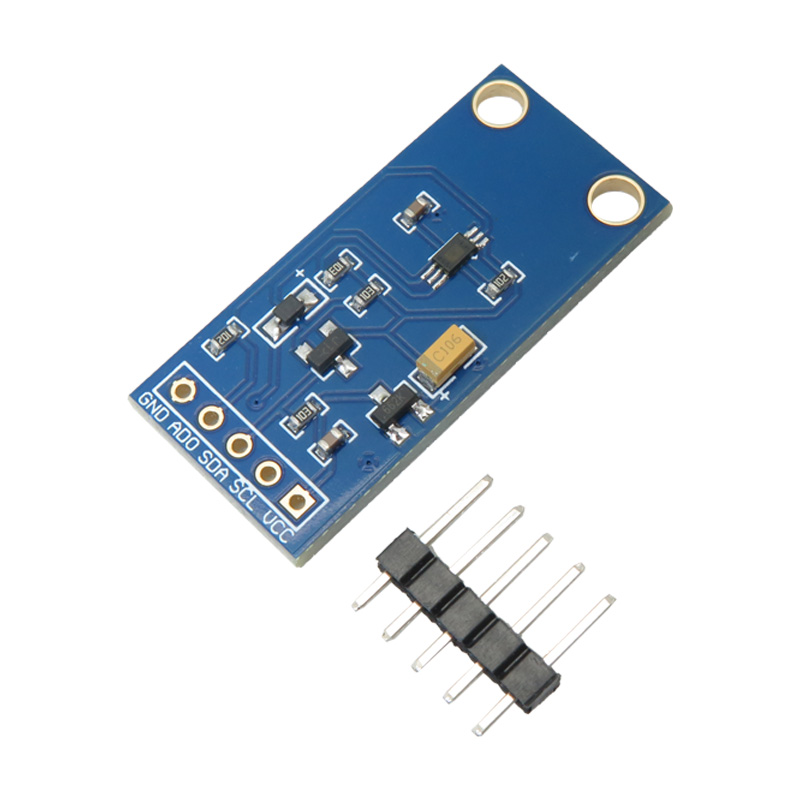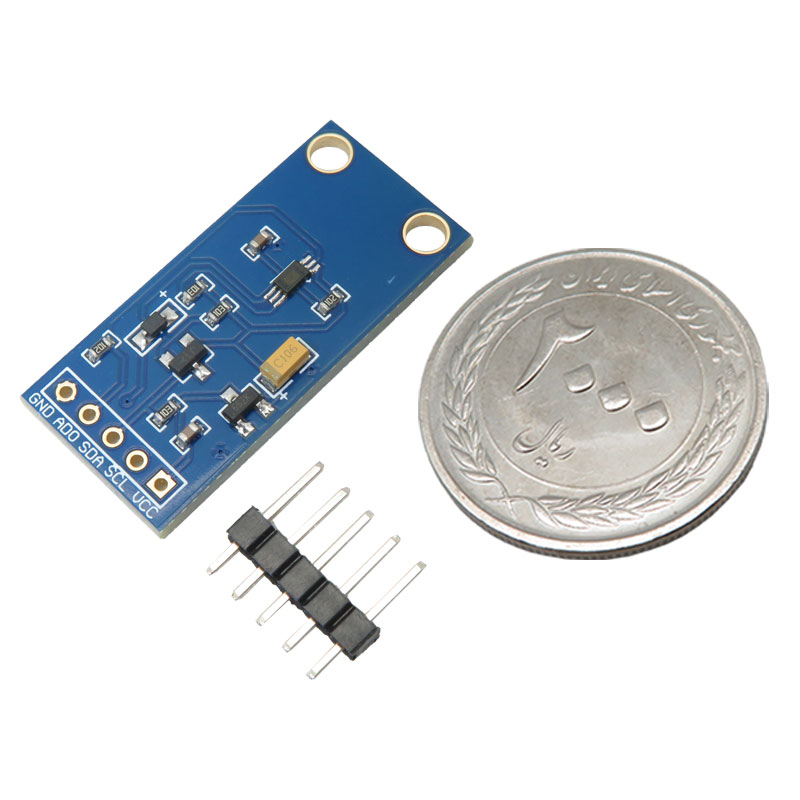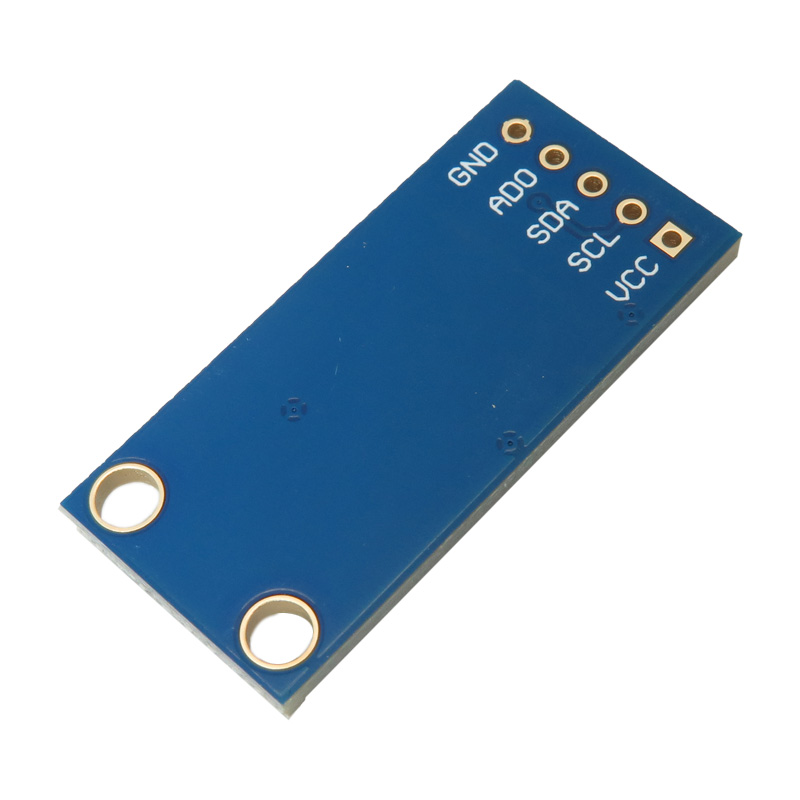95,530 تومان
کالا موجود استموجودی انبار : 1 عدد
علاقه مندان : 8 نفر
وضعیت : فعال
تعداد مرجوعی : 0
دنبال کنندگان : 9 نفر
قدمت : 12 سال و 1 ماه و 5 روز
وزن : 3 گرم
کل فروش : 617 عدد
تعداد سفارش ها : 383 سفارش
4 از 5.0 با 7 رای
ماژول سنسور سنجش شدت نور BH1750FVI دارای ارتباط I2C
ماژول سنسور شدت نور BH1750 یک برد مجهز به سنسور حساس به شدت نور است که دارای یک مبدل AD شانزده بیتی می باشد. این ماژول می تواند مستقیما سیگنال دیجیتال در خروجی ایجاد کند. اینترفیس ارتباطی این ماژول رابط سریال I2C می باشد. داده های خروجی این ماژول تشخیص میزان نور محیط با دقت و رزولوشن بالا بصورت lx می باشد(لوکس متر).این ماژول به راحتی می تواند به وسیله آردوینو راه اندازی شود.
کاربرد ماژول سنجش شدت نور BH1750 :
اندازه گیری شدت نور در:
- چراغ های جلو خودرو
- چراغ های فلش
- دوربین های دیجیتال
- چراغ های عکاسی
- تنظیم نور پس زمینه صفحه کلید موبایل
مشخصات ماژول سنجش شدت نور BH1750 :
- ارتباط I2C
- ولتاژ متغیر: 4.5V~6V یا 3.3V
- مبدل لومینانس به مقادیر دیجیتال
- پاسخ طیفی تقریبا مشابه چشم انسان
- محدوده وسیع و دقت بالا (1 ~ 65535 lx)
- وابستگی کم به منبع نور( برای مثال لامپ رشته ای ، هالوژن ،LED سفید و خورشیدی)
- نتیجه اندازه گیری قابل تنظیم با تاثیر پنجره نوری
- تاثیر پذیری بسیار کم نسبت به مادون قرمز
- اندازه گیری تغییرات کم (20%+/- )
- سازگاری با آردوینو
روشنایی LX:
- شب: 0.001~0.02
- شب مهتابی: 0.02~0.3
- ابری در فضای بسته: 5~50
- ابری در فضای باز: 50~500
- آفتابی در فضای بسته: 100~1000
مستندات:
نمونه کد آردوینو و سیم بندی BH1750FVI
Description:
This is a BH1750 light intensity sensor breakout board with a 16 bit AD converter built-in which can directly output a digital signal, there is no need for complicated calculations. This is more accurate and easier to use the version of the simple LDR which only outputs a voltage that needs to be calculated in order to obtain meaningful data. With the BH1750 Light Sensor intensity can be directly measured by the LUX Meter, without needing to make calculations. The data which is output by this sensor is directly output in Lux (Lx). When objects which are lighted in homogeneous get the 1 lx luminous flux in one square meter, their light intensity is 1lx. Sometimes to take good advantage of the illuminant, you can add a reflector to the illuminant. So that there will be a more luminous flux in some directions and it can increase the illumination of the target surface.
BH1750 ambient light sensor can be interfaced with Arduino through I2C bus pins such as SDA and SCL that are A4 and A5 pins of Arduino Uno.
Application :
Light intensity measurement in:
Car headlights
Flash lights
Digital cameras
Photography lights
Setting the backlight of the mobile keyboard
Features:
ROHM Original BH1750FVI chip
Power Supply: 3-5V
Size: 15mm×33mm
Light Intensity Range: LX 0-65535
Sensor Built-in 16bit AD Converter
Minimum IR Radiations Effect
Direct Digital Output (omit complex computation, omit calibration)
Environmental Light Source Spectral characteristics of the visual sensitivity
Determination of high precision of 1 lux for a wide range of brightness
Standard IIC communication protocol The internal module of the module includes the
communication level conversion and the 5V is directly connected with the IO microcontroller
STC 51 C language test code
C C8051F340 language test code
M16 C AVR language test code
Ambient light sensor IC on easy to the interface module
16Bit Resolution
Direct LUX Output
I2C Interface
Pins Description:
GND: Pin1 is a ground pin.
ADD: It sets the address of the I2C interface. Connect this pin either to the ground or Vcc after selecting the address via I2C.
SDA: Serial Data Address pin transfers data through the I2C bus.
SCL: It is a serial clock pin for communication through the I2C interface.
Vcc: Apply 3.3V-5V at this pin.


